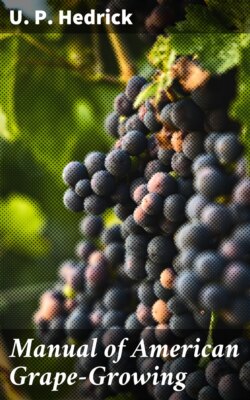Читать книгу Manual of American Grape-Growing - U. P. Hedrick - Страница 11
На сайте Литреса книга снята с продажи.
The Rotundifolia or Muscadine grapes.
ОглавлениеLong before the northern Labruscas had attained prominence in the vineyards of the North, a grape had been domesticated partially in the South. It is Vitis rotundifolia (Fig. 3), a species which runs riot from the Potomac to the Gulf, thriving in many diverse soils, but growing only in the southern climate and preferring the seacoast. Rotundifolia grapes have been cultivated somewhat for fruit or ornament from the earliest colonial times. It is certain that wine was made from this species by the English settlers at Jamestown. Vines of it are now to be found on arbors, in gardens or half wild on fences in nearly every farm in the South Atlantic states. That the Rotundifolias have not been more generally brought under cultivation is due to the bountifulness of the wild vines, which has obviated the necessity of domesticating them. The fruit of its varieties, to a palate unaccustomed to them, is not very acceptable, having a musky flavor and odor and a sweet, juicy pulp, which is lacking in sprightliness. Many, however, acquire a taste for these grapes and find them pleasant eating. The great defect of this grape is that the berries part from the pedicels as they ripen and perfect bunches cannot be secured. In fact, the crop is often harvested by shaking the vines so that the berries drop on sheets beneath. Despite these defects, a score or more varieties of this species are now under general cultivation in the cotton-belt, and interest in their domestication is now greater than in any other species, with great promise for the future.
